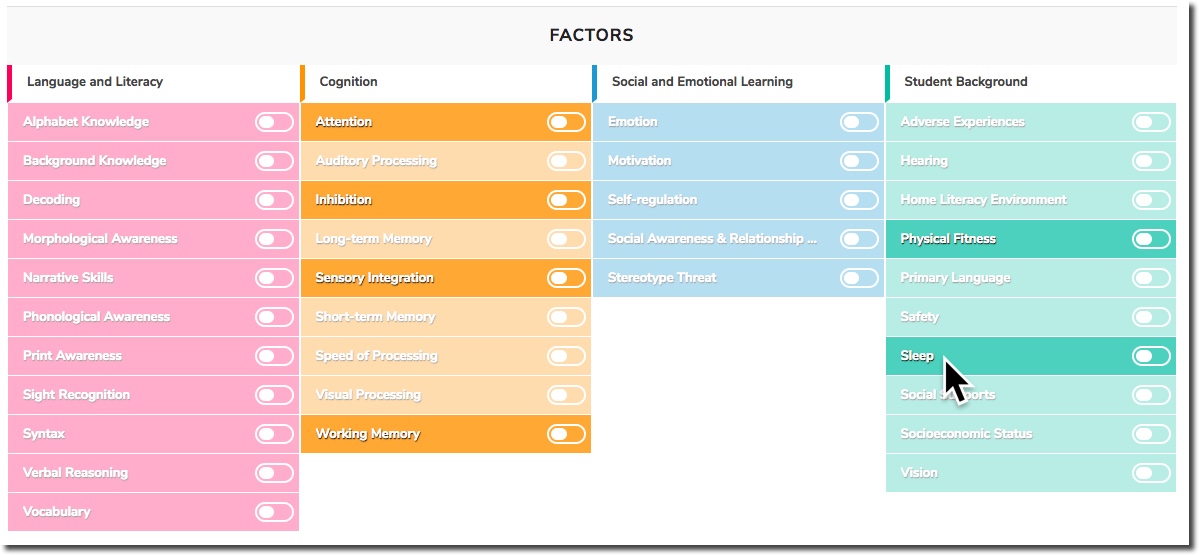Over the past few years, in several different roles, I have researched and experimented with various frameworks and approaches to Personalized Learning. Despite the vast amount of resources out there that describe what personalized learning is and how to implement it, it is often difficult to find quality research that gets to the “why” of personalization.
One of the most compelling arguments I have seen thus far relates directly to the idea of “learner variability.” In short, the concept of learner variability implies that all learners are inherently different across various domains, whether it be academic, social, emotional or other areas. It can also be argued that each year, our classrooms are becoming increasingly diverse across these domains. Personalized learning, with its focus on meeting students where they are, actively embraces learner variability and provides various pathways to success that are optimized for each student.
"Learner variability defines personalized learning….The culture of personalization is built on embracing all comers and providing paths for success for each student." Source: Policies and Practices that Meet Learners Where They Are (Digital Promise)
Personalized learning also advocates that instruction is tailored to students specific needs and interests, particularly what they learn, when they learn, how they learn, and how they demonstrate understanding. Much of this overlaps with Universal Design for Learning (UDL). The UDL framework and associated guidelines help educators “address the predictable variability in learning that we know will be present in any environment.” UDL designates three distinct cognitive areas of variability: Engagement (The “Why” of Learning), Representation (The “What” of Learning), and Action & Expression (The “How” of Learning.) Is a theme emerging?
Graphic shared by the Digital Promise team during our Learner Variability Challenge Collaborative meeting.
While at a recent Digital Promise League of Innovative Schools summit (BWRSD is a member district), I had the fortunate opportunity of joining a “Challenge Collaborative” that is diving into the concept of learner variability. We kicked things off by viewing the video below by David Rose of Harvard University, a key contributor to the development of the UDL field. In this video, he suggests that we actively design schools that embrace learner variability and build upon students strengths, as opposed to “standardizing” students and designing to the mythical average.
At the DPLIS meeting, we also had the opportunity to test out a new Learner Positioning System platform that can help connect emerging research in cognitive science, neuroscience, and social-emotional learning with classroom practices that can help address learner variability. As you can see in the screenshot below from the PK-3 Reading section, educators can visualize how one factor (in this case sleep) impacts learning in key areas across domains. Educators can then drill down and select strategies suggested via this platform that address those specific factors. LPS can also be viewed as an emerging tool that can help edtech developers design products that more effectively address learner variability. (Example Here of Partnership with ReadWorks) Digital Promise has also published a new series of white papers that highlight emerging learning science research related to learner variability along with practical strategies for educators and policymakers to refine personalized learning strategies across various educational contexts. (Reports can be found here.)
Screenshot of Digital Promise's New Learner Positioning System (LPS) Platform
In the Bristol Warren Regional District, I can already envision this emerging research helping us in several ways. First, we have developed strong practices regarding student interventions that include data meetings to identify and close student learning gaps. A tool like the LPS can help us identify research-based strategies to address gaps in student learning across multiple domains. It also can provide insights regarding the connections and relationships between gaps in one domain and how it affects another. As a district, we are also taking a deeper dive into social-emotional learning and how to best design learning experiences for students from that lens. This research can help us make the connections between effective personalized learning strategies and designing with social-emotional needs as a key component of learner engagement.
“It is critical for us to make sure that as personalized learning evolves and grows we are leveraging research to explicitly design for the full diversity of learners.” Source: Research and the Promise of Personalized Learning (Digital Promise)
Taking a step back from the complexity of learner variability and its relationship to personalized learning, here is a broad view of how I conceptualize these developments:
Learner variability (academic, social and emotional) is growing in classrooms across the United States.
Learning science research is helping us identify the key factors that influence learner variability.
This research, once translated into practice, can help educators determine which personalized learning strategies to use for which students, and in which context.
Technologies (such as the LPS) can help provide the structures and supports for educators to design and scale effective personalized learning practices that address learner diversity.
Although this remains a relatively new and emerging field, it holds tremendous promise to personalize student learning in more effective and purposeful ways for students across the country.



